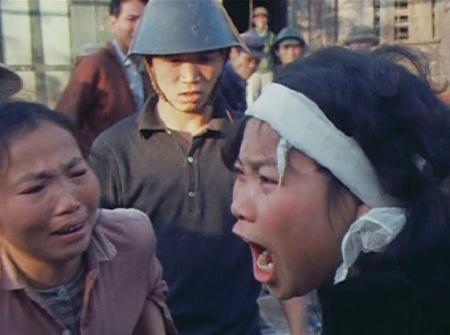North Vietnam: A Visual Journey Through History
The Democratic Republic of Vietnam, commonly known as North Vietnam, holds a significant place in 20th-century history. Its tumultuous journey, marked by war, revolution, and eventual reunification, is best understood through its visual legacy. This article offers a compelling visual history of North Vietnam, exploring key moments and iconic imagery that shaped its identity. We'll delve into the powerful photographs and film that capture the spirit of the era, providing a deeper understanding of this complex and often misunderstood nation.
The Seeds of Revolution: Early 20th Century Vietnam
Before the formal establishment of North Vietnam in 1954, the region was already embroiled in the struggle against French colonial rule. Images from this period often depict:
- The hardship of daily life under French colonial rule: Photographs showcase impoverished farmers, crowded marketplaces, and the stark contrast between the colonial elite and the Vietnamese populace. These images highlight the social inequalities that fueled the revolutionary movement.
- The rise of nationalist movements: Visual records, including propaganda posters and photographs of key figures like Ho Chi Minh, illustrate the growing momentum of Vietnamese nationalism and the fight for independence. Finding and analyzing these archival images is crucial for understanding the context of the later war.
- Early resistance efforts: Images of guerilla fighters, clandestine meetings, and acts of defiance against French authority are powerful visual representations of the burgeoning resistance movement.
You can find many of these historical images in archives like the (link to English version if available; otherwise, mention it's mostly in Vietnamese).
The First Indochina War and the Geneva Accords
The First Indochina War (1946-1954) dramatically shaped North Vietnam's destiny. Visual representations of this period are striking:
- The iconic image of Ho Chi Minh: His presence in countless photographs and posters solidified his role as a national symbol and revolutionary leader. Understanding the propaganda surrounding his image is key to understanding his impact.
- Scenes of warfare and devastation: Photographs and film footage depict the brutality of the war, showcasing both the military conflict and its impact on civilian populations.
- The aftermath of the war and the division of Vietnam: Images reflecting the Geneva Accords' impact, including the division of Vietnam along the 17th parallel, are crucial for understanding the geopolitical landscape that followed.
The Building of a Socialist Nation: North Vietnam Post-1954
The period following the Geneva Accords witnessed the establishment of a socialist state in North Vietnam. This era is visually represented by:
- Propaganda posters promoting collectivization and industrialization: These vibrant posters, often featuring idealized workers and farmers, showcase the government's efforts to modernize the country. Explore the stylistic choices and messaging within these posters to understand their ideological function.
- Images of infrastructure projects: Photographs and film footage of dam construction, road building, and other infrastructure projects demonstrate the government's commitment to economic development.
- Daily life in North Vietnam: Photographs depicting everyday life offer a more intimate view of the socialist society, showcasing family life, work, and community activities. These often-overlooked images give a humanistic perspective to the period.
The Vietnam War and its Impact on North Vietnam
The Vietnam War (1955-1975) cast a long shadow over North Vietnam. Visual representations of this period are particularly poignant:
- Images of North Vietnamese soldiers and guerilla fighters: Photographs showcase the resilience and determination of the North Vietnamese army, highlighting their unconventional warfare tactics and unwavering commitment.
- Bombing raids and their consequences: Images of destruction caused by American bombing campaigns underscore the devastating impact of the war on the North Vietnamese landscape and its people. The emotional weight of these images is undeniable.
- The unwavering spirit of resistance: Images of civilians aiding the war effort, maintaining morale despite hardship, illustrate the collective resilience of the North Vietnamese population.
Reunification and Beyond
The eventual reunification of Vietnam in 1975 marked a pivotal moment in North Vietnam's history. The visual record includes:
- Images of the fall of Saigon: These iconic photographs capture the end of the war and the beginning of a unified Vietnam.
- Post-war reconstruction efforts: Images of rebuilding and the transition to a unified nation provide a glimpse into the challenges and triumphs that followed reunification.
Conclusion: A Legacy in Images
The visual history of North Vietnam provides a powerful and compelling narrative of a nation forged in struggle and revolution. By examining these images, we gain a deeper understanding of the complexities of this era, the resilience of its people, and the lasting impact of its historical journey. Further research into archival photographs, film, and other visual materials will continue to enrich our understanding of North Vietnam's past and its enduring legacy. What images resonate most strongly with you, and why? Share your thoughts in the comments below!
